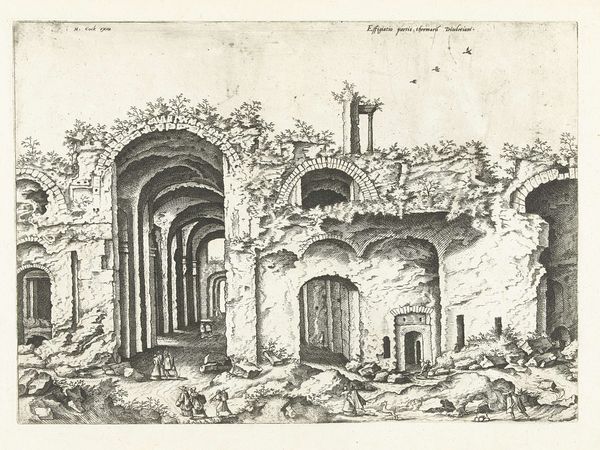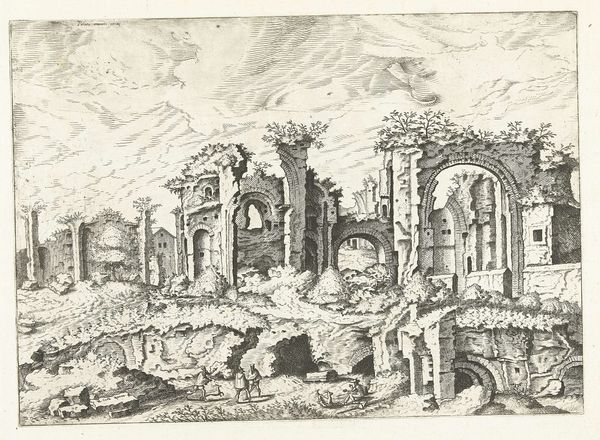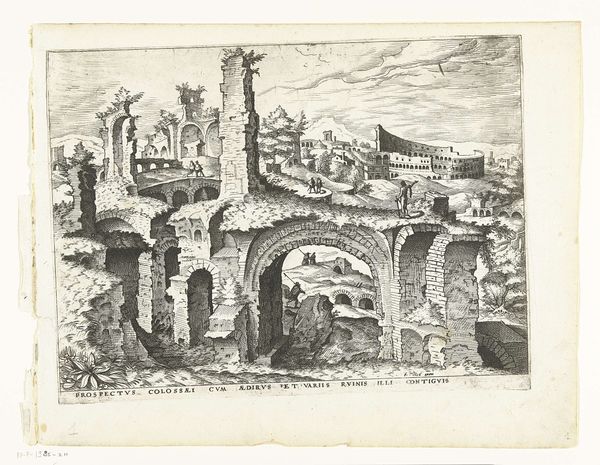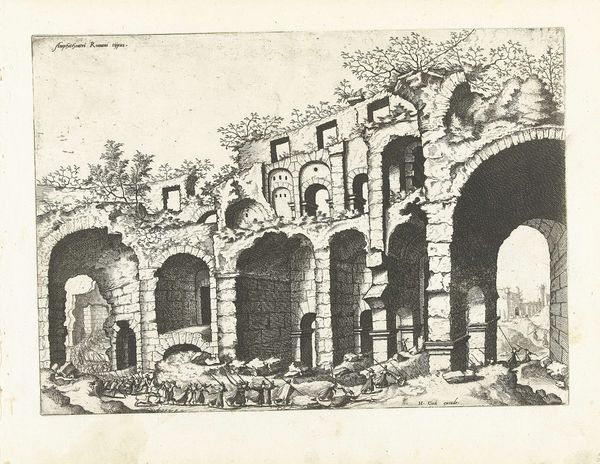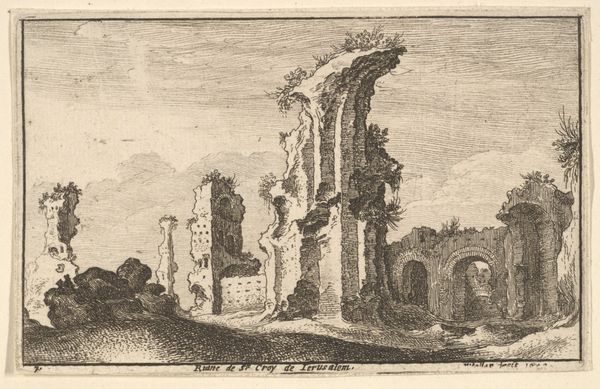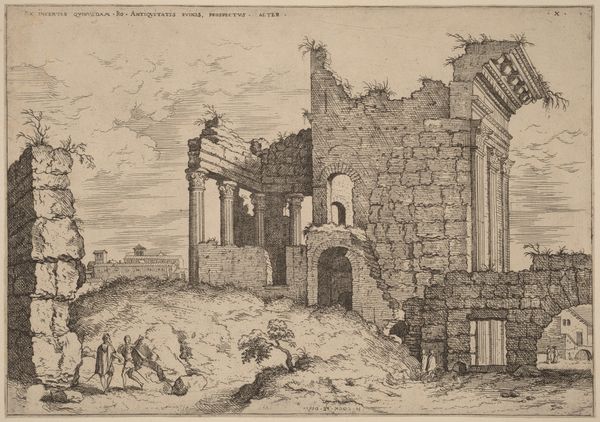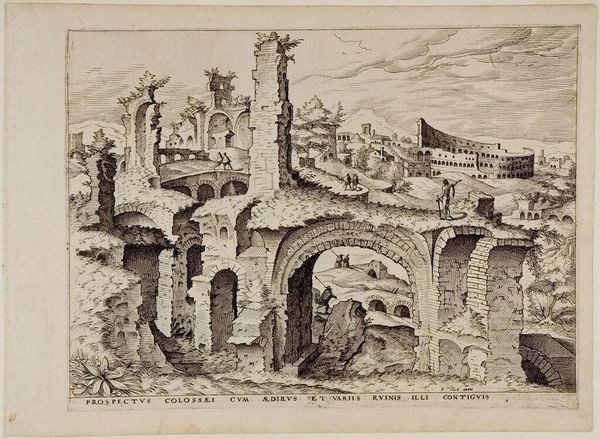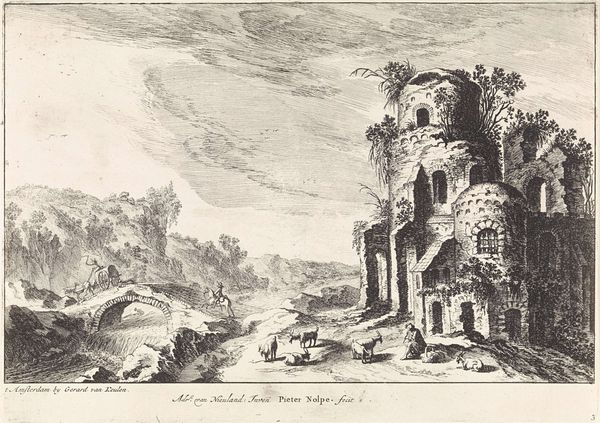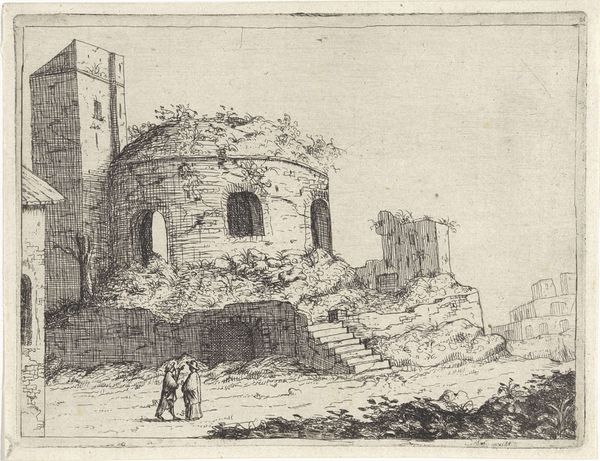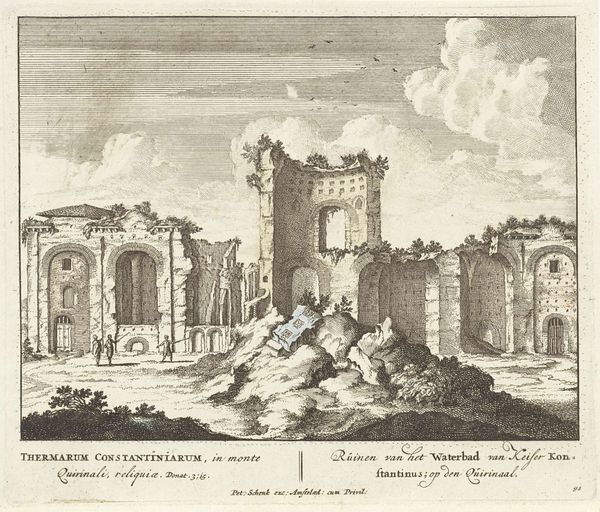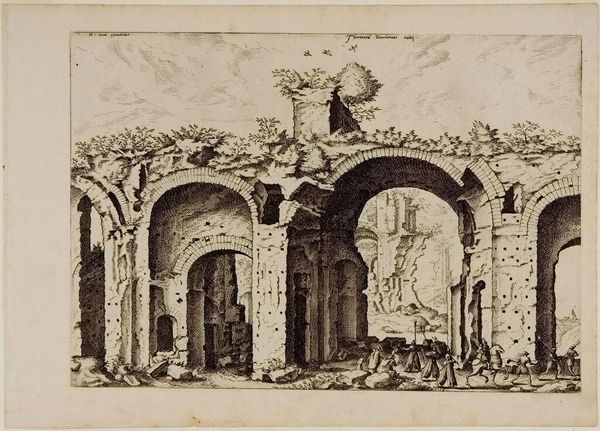
drawing, print, etching, engraving, architecture
#
drawing
#
baroque
# print
#
pen sketch
#
etching
#
landscape
#
cityscape
#
italian-renaissance
#
engraving
#
architecture
Dimensions: height 162 mm, width 190 mm
Copyright: Rijks Museum: Open Domain
Curator: This is "Ruïne van de vredestempel te Rome," or Ruins of the Temple of Peace in Rome, dating from sometime between 1675 and 1711. It's an etching by an anonymous artist now residing in the Rijksmuseum collection. The print depicts what's left of the Temple of Peace, also known as the Forum of Vespasian. Editor: What immediately strikes me is the sense of desolation. The ruins dominate the scene, rendered in such stark detail, while the tiny figures in the foreground seem insignificant against the weight of history and decay. There's almost a romantic melancholy in its depiction. Curator: Absolutely. It's important to remember the Temple of Peace was initially built to symbolize imperial power and the end of the civil wars under Vespasian. But by presenting it as a ruin, the artist alludes to a certain transience—the ephemeral nature of empires and earthly achievements. Symbols of power inevitably crumble. Editor: It’s almost a meditation on colonialism too, and the West’s obsession with appropriating Roman glory for its own agenda. Who is at "peace," when war always creates a ruin for others? The perspective gives these two foreground figures the role of observers, perhaps complicit with power? Curator: Possibly. The ruined arches and crumbling walls also emphasize the passage of time. The very act of rendering this space allows the artist to reframe classical glory. In the absence of splendor, it evokes not just what was but also what has been lost—and perhaps, forgotten. It invites the viewer to remember an event or memory associated with similar feelings. Editor: And within that re-framing, what is not lost—replicated or repeated throughout art and architecture? What continues as a dominant structural ideal even while cultures collapse or are violently overthrown? I wonder if it asks: what remains and why? Curator: I think you’ve perfectly captured the image’s intrinsic duality: a visual reminder of lost grandeur tinged with an undeniable message of decay, one that simultaneously looks back and lingers within a shared cultural visual vocabulary that persists and evolves through repetition and remix. Editor: It pushes us to reflect not only on history, but also on our present moment and what legacies of "peace" we might unknowingly be leaving behind.
Comments
No comments
Be the first to comment and join the conversation on the ultimate creative platform.
